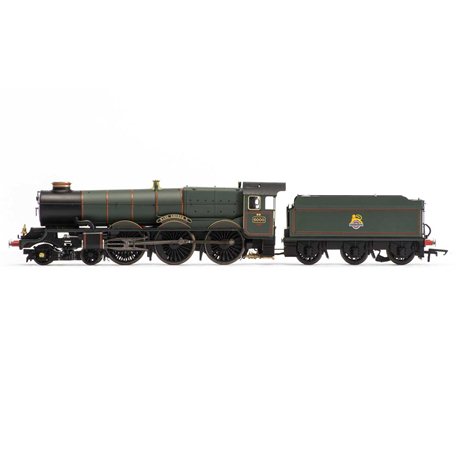No products
BR 4-6-0 ‘King George V’ 6000 Class - Early BR (as preserved)
R3330
New product
BR 4-6-0 ‘King George V’ 6000 Class - Early BR (as preserved)
- Length 276mm
- DCC Type DCC Ready
- Livery Early BR
- Limited Edition Yes
- Class 6000
- Designer C. B. Collett
- Entered Service 1928
- Motor 5 Pole Skew Wound. Loco Drive
- Purpose Express Passenger
- Wheel Configuration 4-6-0
- Special Features
- Brass axle bearings
- Cab detail
- NEM Couplings
- Sprung Buffers
- Tender Detail
This product is no longer in stock
Data sheet
| Scale | OO (1/76) |
More info
BR 4-6-0 ‘King George V’ 6000 Class - Early BR (as preserved)
- Length 276mm
- DCC Type DCC Ready
- Livery Early BR
- Limited Edition Yes
- Class 6000
- Designer C. B. Collett
- Entered Service 1928
- Motor 5 Pole Skew Wound. Loco Drive
- Purpose Express Passenger
- Wheel Configuration 4-6-0
- Special Features
- Brass axle bearings
- Cab detail
- NEM Couplings
- Sprung Buffers
- Tender Detail
In the mid-l920s, with train load sizes increasing to and from the South West, the Great Western Railway were faced with the need for even more powerful locomotives, something that could haul the heavy expresses at an average speed of 60 mph. In response, the Great Western's General Manager, Sir Felix Pole, gave his Chief Mechanical Engineer, Charles Collett, permission to proceed with the design and construction of a Super-Castle, the result being the King class 4-6-0 design which emerged from Swindon works in June 1927.
The Great Western promoted the new Kings as "the most powerful passenger locomotives in the country" and at 29' 5" long and weighing 89 tons, the class probably represented the limit of the 4-6-0 design. Initially, 20 locomotives were ordered, the first six being built at Swindon in June and July 1927, followed by the remaining fourteen locomotives between February and July 1928. The final ten locomotives of the class were not to be built for another two years, being constructed between May and August 1930 and they incorporated some minor changes from the earlier engines.
The decision to name the new class after the Kings of England was agreed by Collett in May 1927, being named in reverse chronological order starting from King George v. Only being able to operate over the Great Western's "Double Red Route", the Kings were confined to the West of England main line as far as Plymouth, via Newbury and Bristol, as well as the cut-off route from Paddington to Wolverhampton via Bicester. It was over these routes that the Kings came to be associated with the iconic Cornish Riviera Express and Cambrian Coast Express services, regularly reaching speeds of 100mph, but from 1959 they were gradually replaced on the west of England services by diesel-hydraulic power and from 1962 on the Paddington-Wolverhampton route.
By December 31, 1962 all had been withdrawn from service to face the cutter's torch.
The first of the 'King' locomotives, 6000 King George V was completed in June 1927 and very shortly afterwards shipped to the USA, to participate in the Baltimore and Ohio Railroad centenary celebrations. Presented with a commemorative bell and plaques in recognition of its contribution, when King George V returned to Britain it was affectionately known as 'The Bell' until its withdrawal.




